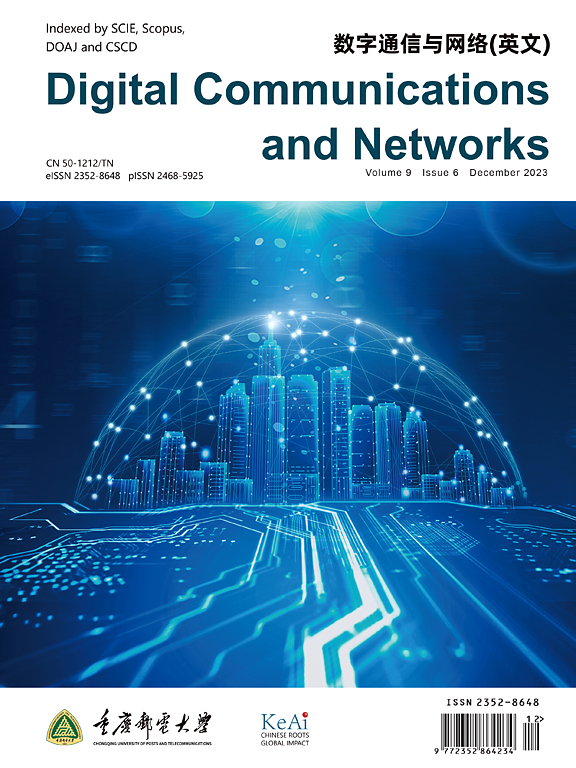基于深度学习的可重构智能曲面辅助广义空间调制检测器
IF 7.5
2区 计算机科学
Q1 TELECOMMUNICATIONS
引用次数: 0
摘要
可重构智能表面(RIS)被认为是未来无线通信网络发展的前沿技术,具有提高频率效率和降低能耗的特点。本文提出了一种将RIS与广义空间调制(GSM)相结合的结构,并在此基础上提出了一种多残差深度神经网络(MR-DNN)方案,该方案通过检测块中的子dnn检测有源天线及其发射星座符号。仿真结果表明,提出的MR-DNN检测算法在误码率(BER)方面明显优于传统的零强迫(Zero-Forcing, ZF)和最小均方误差(Minimum Mean Squared Error, MMSE)检测算法。此外,MR-DNN检测算法比传统检测算法具有更低的时间复杂度。本文章由计算机程序翻译,如有差异,请以英文原文为准。
Generalized spatial modulation detector assisted by reconfigurable intelligent surface based on deep learning
Reconfigurable Intelligent Surface (RIS) is regarded as a cutting-edge technology for the development of future wireless communication networks with improved frequency efficiency and reduced energy consumption. This paper proposes an architecture by combining RIS with Generalized Spatial Modulation (GSM) and then presents a Multi-Residual Deep Neural Network (MR-DNN) scheme, where the active antennas and their transmitted constellation symbols are detected by sub-DNNs in the detection block. Simulation results demonstrate that the proposed MR-DNN detection algorithm performs considerably better than the traditional Zero-Forcing (ZF) and the Minimum Mean Squared Error (MMSE) detection algorithms in terms of Bit Error Rate (BER). Moreover, the MR-DNN detection algorithm has less time complexity than the traditional detection algorithms.
求助全文
通过发布文献求助,成功后即可免费获取论文全文。
去求助
来源期刊

Digital Communications and Networks
Computer Science-Hardware and Architecture
CiteScore
12.80
自引率
5.10%
发文量
915
审稿时长
30 weeks
期刊介绍:
Digital Communications and Networks is a prestigious journal that emphasizes on communication systems and networks. We publish only top-notch original articles and authoritative reviews, which undergo rigorous peer-review. We are proud to announce that all our articles are fully Open Access and can be accessed on ScienceDirect. Our journal is recognized and indexed by eminent databases such as the Science Citation Index Expanded (SCIE) and Scopus.
In addition to regular articles, we may also consider exceptional conference papers that have been significantly expanded. Furthermore, we periodically release special issues that focus on specific aspects of the field.
In conclusion, Digital Communications and Networks is a leading journal that guarantees exceptional quality and accessibility for researchers and scholars in the field of communication systems and networks.
 求助内容:
求助内容: 应助结果提醒方式:
应助结果提醒方式:


